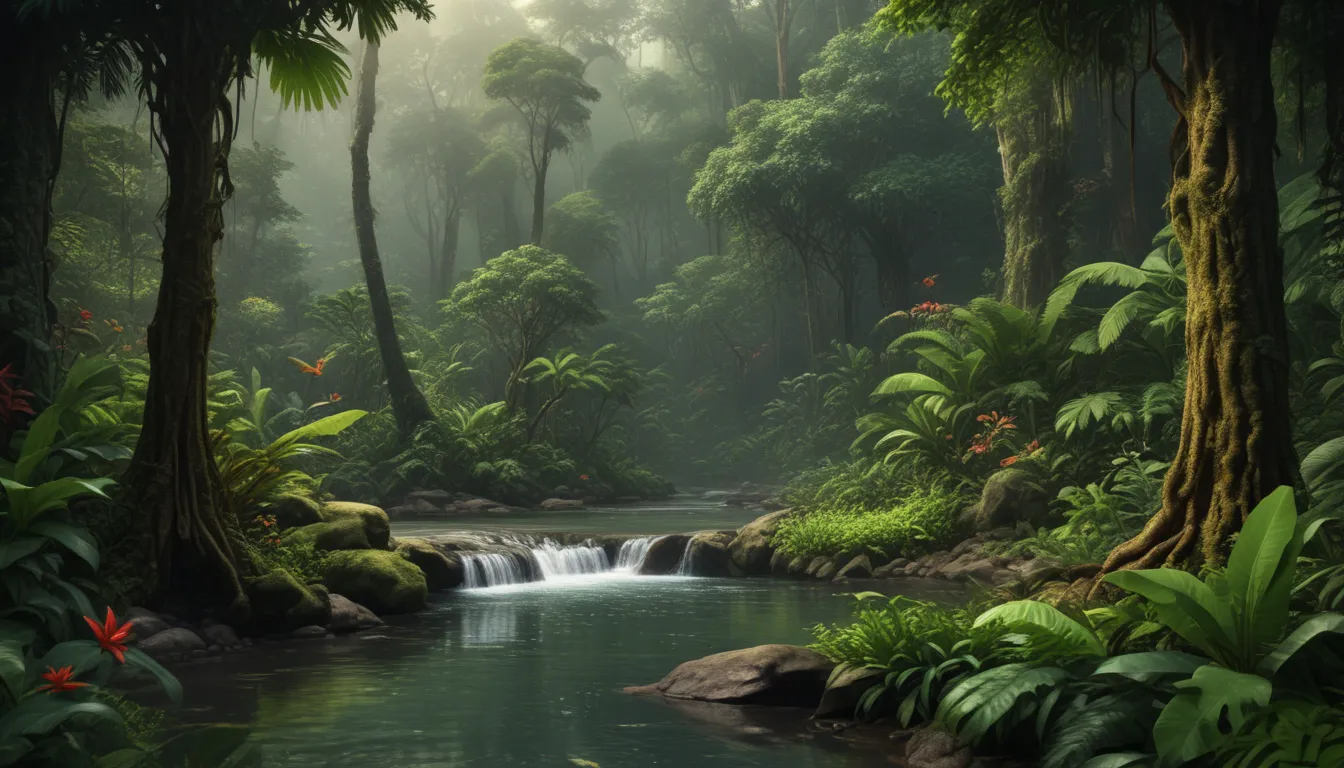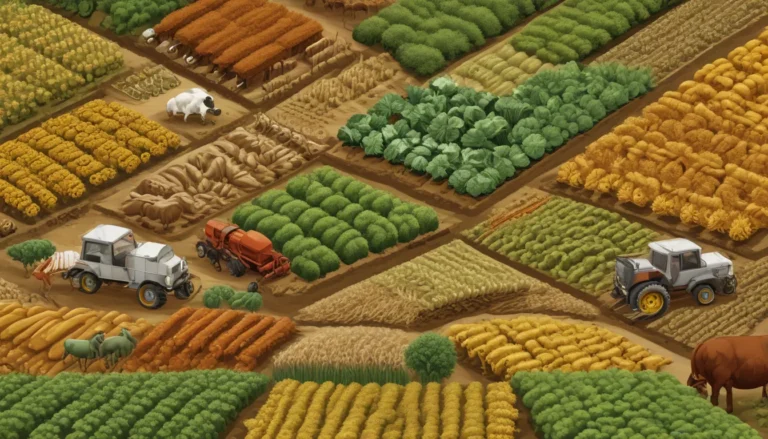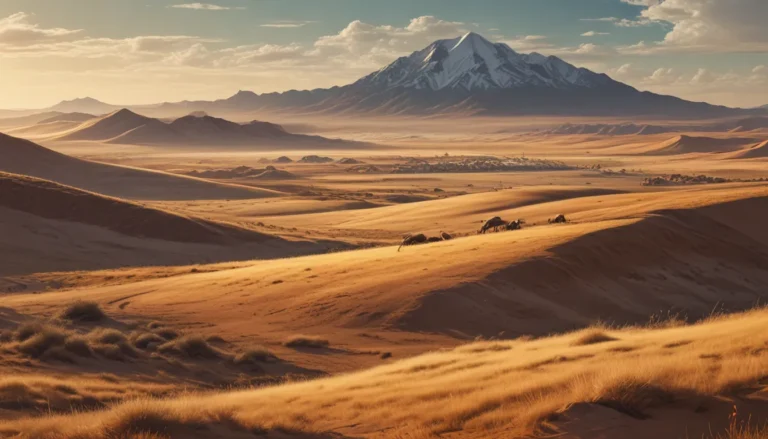A Note About Images: The images used in our articles are for illustration purposes only and may not exactly match the content. They are meant to engage readers, but the text should be relied upon for accurate information.
Tropical rainforests are not only breathtakingly beautiful but also serve as vital ecosystems that support a wide array of plant and animal life. From their lush green canopies to their incredible biodiversity, these regions are teeming with wonders waiting to be explored. In this article, we will delve into 20 astonishing facts about tropical rainforests that highlight their significance and uniqueness. Get ready to be amazed by the beauty and importance of these captivating ecosystems.
Unveiling the Diversity of Tropical Rainforests
Tropical rainforests are truly unparalleled when it comes to biodiversity. With millions of unique species calling these ecosystems home, they are a natural wonder worth protecting. These regions are home to over half of the world’s plant and animal species, showcasing the remarkable diversity found within their lush landscapes.
The Majesty of the Amazon Rainforest
Spanning across nine countries in South America, the Amazon Rainforest stands out as the largest tropical rainforest in the world. Known for its vast size and rich biodiversity, this incredible ecosystem is a symbol of the wonders that tropical rainforests hold.
Climate Regulation by Tropical Rainforests
One of the crucial roles played by tropical rainforests is in regulating the Earth’s climate. Through a process called transpiration, trees release water vapor into the atmosphere, helping to maintain global temperature and rainfall patterns. This essential function highlights the importance of preserving these vital ecosystems.
The Medicinal Bounty of Tropical Rainforests
Some of the world’s most potent medicinal plants can be found in tropical rainforests. The vast array of plant species in these regions has led to the discovery of life-saving medicines for treating various diseases and illnesses. The untapped potential of these natural remedies underscores the importance of conserving tropical rainforests.
The Threat of Deforestation
Despite their significance, tropical rainforests face a significant threat from deforestation. Human activities such as agriculture, logging, and mining have resulted in the loss of millions of hectares of rainforest each year. This destruction not only harms biodiversity but also contributes to climate change by releasing stored carbon into the atmosphere.
The Vital Role of Tropical Rainforests as the “Lungs of the Earth”
Referred to as the “lungs of the Earth,” tropical rainforests play a crucial role in absorbing carbon dioxide and releasing oxygen. This vital function helps mitigate climate change and underscores the importance of preserving these essential ecosystems.
The Intricate Ecosystem of the Canopy
The canopy of a tropical rainforest is a complex ecosystem in itself, comprising multiple layers of vegetation and supporting a rich web of life. From various birds to primates and insects, the canopy hosts a diverse array of species that contribute to the overall biodiversity of the rainforest.
The Abundance of Life near the Equator
Tropical rainforests are predominantly found near the equator, where they receive abundant sunlight and experience stable temperatures throughout the year. This ideal climate fosters the rich biodiversity and lush vegetation that characterize these vibrant ecosystems.
The Symphony of Sounds in Tropical Rainforests
The sounds of tropical rainforests can be overwhelming, with a constant symphony of calls, chirps, and songs from different animal species creating a vibrant auditory experience. This cacophony of sounds adds to the immersive and enchanting nature of these remarkable environments.
The Cultural Significance of Tropical Rainforests
Tropical rainforests are not just essential for biodiversity but also hold cultural significance for indigenous communities. Many indigenous peoples rely on these forests for their livelihoods, cultural heritage, and spiritual practices, emphasizing the deep connection between people and nature in these regions.
Harnessing the Healing Power of Tropical Plants
More than 70% of plants with anti-cancer properties are found in tropical rainforests, highlighting the untapped medicinal potential of these diverse ecosystems. The discovery of valuable compounds for developing new cancer treatments underscores the importance of preserving these natural resources.
The Incredible Tree Diversity in Tropical Rainforests
One hectare of tropical rainforest can contain more tree species than all of North America, showcasing the immense tree diversity found within these ecosystems. The variety of tree species within a small area is a testament to the extraordinary biodiversity of tropical rainforests.
The Lifeline of Freshwater in Tropical Rainforests
Tropical rainforests are a major source of freshwater, as the dense vegetation captures rainfall, filters it through the soil, and releases it into rivers and streams. This essential function highlights the critical role that rainforests play in maintaining water resources.
A Culinary Journey through Tropical Rainforests
Tropical rainforests are a treasure trove of culinary delights, offering a wide range of exotic fruits and spices. From durian and passion fruit to vanilla and cinnamon, these forests provide a rich tapestry of flavors that have captivated food enthusiasts worldwide.
Towering Giants of the Rainforest
Some tropical rainforest trees can grow up to 60 meters tall, forming a majestic canopy that shades the forest floor below. These towering giants add to the awe-inspiring beauty of these vibrant ecosystems.
The Avian Paradise of Tropical Rainforests
Tropical rainforests are a hotspot for bird diversity, with an incredible array of colorful and unique bird species inhabiting these lush environments. The vibrant birdlife adds to the enchanting allure of these captivating ecosystems.
The Timeless Existence of Tropical Rainforests
Estimated to have existed for over 70 million years, tropical rainforests have withstood the test of time and continue to thrive in various parts of the world. Their ancient existence reflects the enduring resilience of these remarkable ecosystems.
A Vibrant Community on the Forest Floor
The forest floor of a tropical rainforest is teeming with life, from leaf litter and decomposing plant matter to insects, reptiles, and amphibians. This diverse community of organisms highlights the intricate web of life that thrives within these vibrant ecosystems.
The Origin of Modern-Day Crops in Tropical Rainforests
Many of our favorite foods, such as bananas, cocoa, and coffee, originated in tropical rainforests. These widely consumed crops trace their roots back to the bountiful rainforests of the tropics, showcasing the global impact of these diverse ecosystems.
The Oxygen Factory of the Planet
Tropical rainforests produce approximately 20% of the world’s oxygen, making them a crucial oxygen source for the planet. The continuous conversion of carbon dioxide into oxygen through photosynthesis highlights the essential role that rainforests play in sustaining life on Earth.
Conclusion: Preserving the Wonders of Tropical Rainforests
The tropical rainforest is a mesmerizing and indispensable ecosystem that captivates with its beauty and significance. The 20 fascinating facts about tropical rainforests shed light on the essential functions, incredible biodiversity, and cultural richness of these vibrant ecosystems. By understanding and appreciating the wonders of tropical rainforests, we can work towards a sustainable future that values and protects these irreplaceable natural treasures.
FAQs: Exploring the Mysteries of Tropical Rainforests
What is a tropical rainforest?
A tropical rainforest is a dense forest located in tropical regions, characterized by high rainfall, high humidity, and a wide variety of plant and animal life.
Where are tropical rainforests found?
Tropical rainforests are typically found near the equator in regions such as the Amazon basin, the Congo Basin, and parts of Southeast Asia.
How many layers are there in a tropical rainforest?
A tropical rainforest typically consists of four layers: the emergent layer, the canopy, the understory, and the forest floor.
Why are tropical rainforests important?
Tropical rainforests play a crucial role in maintaining the Earth’s climate, providing habitat for countless species, producing oxygen, and regulating the water cycle.
What threats do tropical rainforests face?
Tropical rainforests are under threat from activities like deforestation, climate change, agriculture, logging, and illegal poaching, which harm the delicate balance of these ecosystems.
How can we protect tropical rainforests?
We can contribute to the protection of tropical rainforests by supporting sustainable practices, reducing our carbon footprint, donating to conservation organizations, and raising awareness about their importance.
Embark on a journey of discovery as you immerse yourself in the wonders of tropical rainforests and the fascinating creatures that inhabit them. Explore the unique characteristics of these lush ecosystems and dive deeper into their captivating world with our engaging articles. Delve into the mysteries of the Amazon Rainforest, uncover more intriguing facts about tropical rainforests, and learn about the fascinating creatures that call these vibrant environments home. Join us in celebrating the beauty and significance of tropical rainforests as we work together to preserve and protect these invaluable natural treasures.






